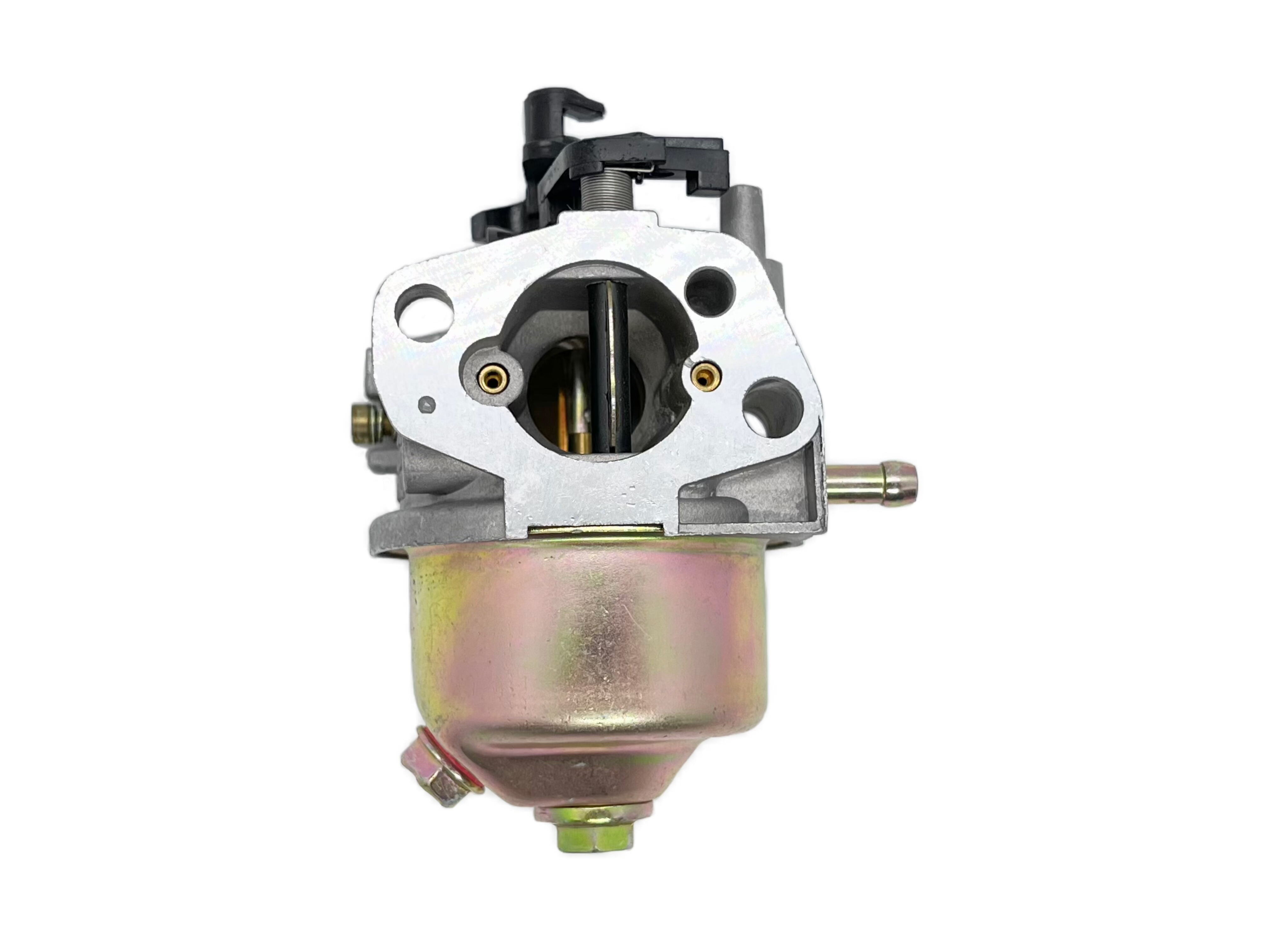Why Cold Start Performance Matters in Brush Cutters
Impact on Engine Longevity and Efficiency
Cold start behaviour is an important issue of brush cutter engine life and performance. Cold start at low temperatures, studies have shown that additional fuel combustion and friction can reduce the lifetime of the engine up to 30%. This friction causes faster deterioration, which means more frequent maintenance or replacements. Furthermore, the incomplete fuel burns during these cold starts, and then acts to waste fuel, and even to output higher rates of emissions. To improve performance, it is important to maintain the maximum cold start performance with better fuel consumption that can effectively save costs. Thus, the purchase of brush cutters with good cold starting capability is beneficial to prolong engine life and reduce operation cost.
User Experience Considerations in Cold Conditions
Operating brush cutters in cold can also have a great effect on how it feels operating the brush cutter. Users experience challenges including longer starting times that frustrate and deter usage. Bad cold start behavior may result in negative reputation for the product which reflects on the brand loyalty and customer satisfaction. To increase user comfort in fired temperatures it's important to precondition the brush cutter by pre-heating the engine or adjusting the carburetor to the correct setting. This type of preparations increase reliability and make the operation easier, also under worse conditions, to the advantage of the customers and the trust towards the product.
Carburetor Basics: Fuel-Air Mixing Mechanics
The Venturi Effect and Combustion Process
The Venturi effect is the basis for the functioning of a carburetor, creating a vacuum which draws fuel in to mix with air to power an internal combustion engine. This not only helps to ensure stable ignition, but also is an important element for sustaining the engine performance. By generating correctly timed vacuum, a carburetor achieves an ideal fuel-to-air ratio, which is essential for smooth, efficient engine operation and minimal exhaust emissions. Studies have shown that Venturi-effect carburetors yields 15%-25% more reliable combustion and lower emissions! So knowing the Venturi effect is important if you are seeking to boost the efficiency of your brush cutter.
Key Components Enabling Precise Mixture Ratios
The carburetor's fuel and air mix can in turn be adjusted through the very basic jets, floats, as well as adjustment screws. These components are responsible for regulating the amount of fuel and air that enters the combustion chamber, which has an impact on the engine’s performance and efficiency. The calibration of the diaphragm carburetor’s components also help the carburetor to fulfil its primary role of being a device that adjusts with the temperature so that the engine can function at its best no matter what environment is it working in. Once its user knows how these parts operate, they can easily fix carburetor problems which plague their brush cutters for increased productivity and superior brush cutter fuel efficiency. Such teachings are especially useful for ensuring the efficacy of a brush cutter in various operating environments.
Choke Function: Enriching Mixture for Cold Starts
Manual vs Automatic Choke Systems
The carburetor choke is a device that prevents excessive fuel/air mixture from entering the cylinders during cold-engine starts..ylabel Problems Manual and Automatic Choke System Carbs The carburetors used by our setups are designed to enrich the fuel air mixture to the engine when the choke is used. Manual choke systems give you a little more control and help to get a richer fuel mixture by adjusting the air flow directly. This is a performance booster, particularly at low temperatures, as you can then adjust the mixture of gas for the given conditions. Automatic choke systems, however easy to use, do not always provide the best mixture for a good cold starting system and are not dependable. Comparison studies support this finding, showing that machines equipped with manual chokes are capable of reliable operation in temperatures down to -20°C, but machines with automatic chokes cannot. This sheer contrast serves to emphasize the role of "Human touch" under harsh conditions, emphasizing need for manual chokes for riders in colder regions.
Optimizing Choke Engagement for Reliable Ignition
In order to start from cold, especially for brushcutter applications, the timing of the choke is crucial. Improper or too-late engagement can cause starting problems, so choke timing is something owners need to be aware of. Training users on their machine’s choke settings can greatly improve the ease of starting in a range of conditions. These are confirmed by reports that calibrating choke engagement condition can improve cold-start ignition and success rate by more than 20%. This enhancement emphasizes the importance for users to know their machines and how to operate them to achieve the best performance and dependability. More in depth knowledge of these setting helps troubleshooting and increases efficiency and equipment life.
Fuel Delivery Efficiency in Low Temperatures
Cold Weather Fuel Flow Dynamics
It's important to know how cold weather affects diesel fuel flow in relation to performance and usability. As the temperature goes down the fuel get thicker making it hard for it to pass through the carburetor and reduce its effectiveness. Increased viscosity leads to incorrect air/fuel mixtures that may result in lost power, hard starting or stalling. Studies have shown that maintaining the fuel at the right temperature of 60°F to 70°F can increase flow rates by 15% and improve engine response time. Adopting measures to keep the fuel at the correct temperature results in better functioning and less risk of higher viscosity.
Addressing Vapor Lock and Fuel Line Freezing
Solving problems such as vapor lock and fuel line freezing are the key to consistent engine starts in cold weather. Vapor lock is incomplete vaporization of fuel forming bubbles in the fuel lines, a result of excessive fuel heat. Avoiding vapor lock involves understanding what causes it and taking steps to prevent it. Also, fuel line freeze is one of the constant problems in cold weather, but an adequate additive can prevent this and cold starts come off smooth. According to the statistics, the treatment of vapor lock and fuel line problems can raise the starting rate of engine by 30% in cold situation. We can greatly improve engine operations in cold zones by recognizing these challenges and taking practical steps.
Common Carburetor Issues Impacting Cold Starts
Clogged Jets and Restricted Fuel Pathways
A carburetor, particularly during cold start, may be adversely affected in its operation due to a blockage to the jets. In cold weather, clear jets are necessary for peak performance. The clean and the maintain are necessary for keeping these jets unclogged. Some experts recommend checking them seasonally to forestall trouble. Specifically, a great volume of the cold start problems can be directly attributed to the neglect of proper jet and fuel system maintenance, thus emphasizing the value of periodic checks.
Diaphragm Deterioration in Temperature Fluctuations
Vibration OfTemperature The in With the carburetor,destruction ofMechanics, Air pasaages shown, shown is equals breakdown of rubber the operable deterioration diaphragms associated therewith may occur. When the temperature goes even lower, the materials could be more delicate and it could lead to damage. That is why frequent examination of these diaphragms are necessary. Replace any worn and evident parts before there is a starting problem. Test Data from Maintenance Practices Evidence from numerous maintenance practices shows that proactively replacing worn diaphragms can greatly enhance the dependability of cold-start system operation, leading to steadier engine operation with changes in temperature.
FAQ
What is the importance of cold start performance in brush cutters?
Cold start performance is crucial for engine longevity, efficiency, and user experience. It helps reduce wear and tear, improves fuel efficiency, and ensures reliable operation even in cold conditions.
How does the Venturi effect improve a carburetor's performance?
The Venturi effect creates a vacuum that pulls fuel into the airflow, ensuring an optimal fuel-air ratio necessary for reliable ignition and reduced emissions.
Why might a manual choke system be more effective than an automatic one in cold starts?
Manual choke systems allow users to directly control the air intake, providing a richer fuel mixture, especially crucial in low temperatures, ensuring reliable ignition compared to automatic systems.
What issues can affect carburetor efficiency in cold weather?
In cold weather, increased fuel viscosity, vapor lock, and fuel line freezing can impact carburetor efficiency. Maintaining fuel temperature and using additives can address these issues.
What is the significance of maintaining unobstructed carburetor jets?
Unobstructed jets are crucial for optimal performance, particularly during cold starts. Regular maintenance prevents clogging, ensuring reliable fuel delivery.
Table of Contents
- Why Cold Start Performance Matters in Brush Cutters
- Carburetor Basics: Fuel-Air Mixing Mechanics
- Choke Function: Enriching Mixture for Cold Starts
- Fuel Delivery Efficiency in Low Temperatures
- Common Carburetor Issues Impacting Cold Starts
-
FAQ
- What is the importance of cold start performance in brush cutters?
- How does the Venturi effect improve a carburetor's performance?
- Why might a manual choke system be more effective than an automatic one in cold starts?
- What issues can affect carburetor efficiency in cold weather?
- What is the significance of maintaining unobstructed carburetor jets?

